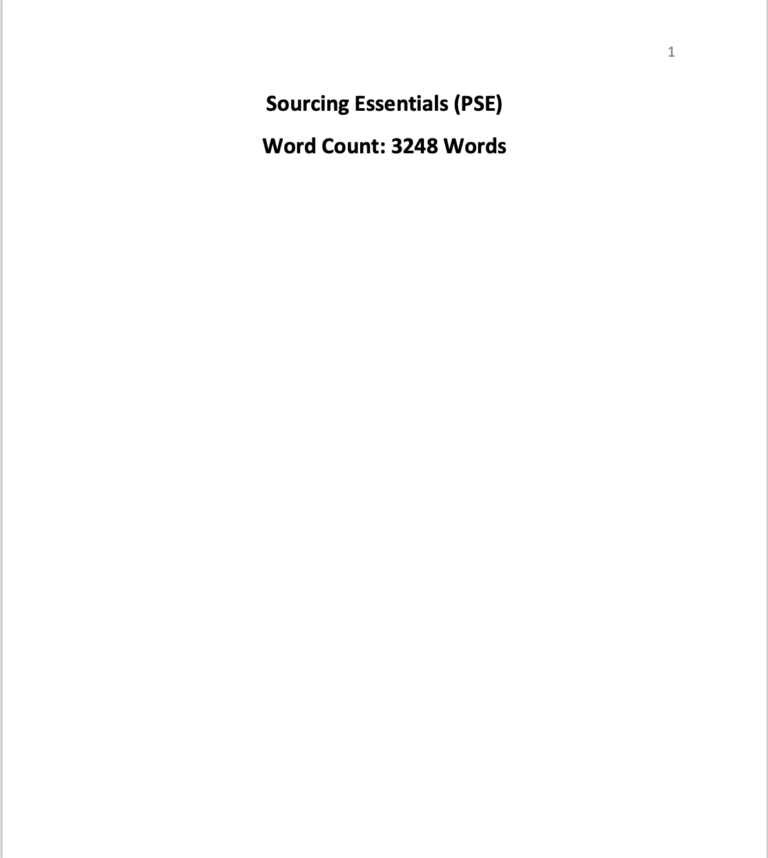Description
Solution
(Solution) 5CO01(AC2.4) Discuss models to show how change is experienced
In order to demonstrate the experience of change in an organisation, Kubler Ross Change Curve Model can be referenced (Lindblad, 2022). Initially, this model was meant to guide the grieving/mourning session. These experiences are identified as including denying, angry, bargain, depressed and accept.
Denial– This experience entail the employees feeling that the change is not necessary. A case example is where the hybrid working change program would be perceived as a change to take jobs from some of the employees. Also, it could be viewed as a practice of eliminating some of the privileges offered to the employees.
Anger– In change, experience could be emotional after termination of the denial stage. It is possible to feel frustrated with the change process particularly in regard to losing their jobs due to issues of flexible working provision.
Bargaining– In bargaining process, this stage entail employees being provided with an opportunity to negotiate for their input in the hybrid working program.
Depression– In the hybrid working implementation, depression mean they are unsure on their role in the hybrid working process implementation (Lukianov et al., 2020).
Acceptance– This stage means the employees accept the hybrid working arrangement as important to them. This is while supporting the process and recommending areas of improvement to be part of their culture.
Emotions, Behaviours and Positives Impacts of Change
In the identified phases, employees evidence a set of feeling and practices. To begin with, they gain a feel of need to be aggressive leading to absenteeism in their roles or failing to be enthusiastic to work in teams. In regard to benefits, Lindblad (2022) highlight employees gaining from being resilient, flexible and actively taking part in their operations.
The positives of the change strategy is inclusive of effective collaboration with the rest of the organisation employees. Through a two-way feedback being enhanced and points of concerns increased, working in a flexible environment would be enhanced. Similarly, awareness by the various entities which support the staff by emotional wellbeing lead to challenges with performance.
Please click the following icon to access this assessment in full
Related Papers
(Solution) CIPS Sourcing Essentials Assessment
- In this assessment, sourcing approaches have been identified and holistically reviewed. This is in line with RCU organisation IT spend category. This is further compared with payment services, document management category which is office suppliers and postal services.
- For evaluating the identified spend categories, various tools have been selected which are Kraljic Analysis Tool, Mendelow’s Analysis Tool for Stakeholder analysis and the Maslow Hierarchy of needs.
- Further, by using the SWOT analysis, the internal and external factors of the sourcing have been selected. A further analysis by use of Peter Block Grid’s has been applied to evaluate the interests of stakeholders to source appropriate position.
- The findings indicate that RCU adopts the best sourcing approach based on their needs.
- Finally, by using Carter’s 10Cs model, the best practice for pursuing suppliers appraisal has been provided for IT spend category.
(Solution) CIPS Sourcing Essentials PSE Saudi Downtown Company
- In this report, an evaluation of various sourcing approaches used in sourcing has been pursued.
- Through a focus on Saudi Downtown Company (SDC), sourcing of Information Technology (IT) systems post COVID due to popularity of remote working in the different departments has been identified as the spend area.
- In the evaluation process, ifferent tools including Mendelow Matrix, Kraljic Matrix, SWOT analysis, Hierarchy of need, and Peter Block Grid have been adopted in the analysis.
- The different sourcing approaches have been identified and their influence for the organisation best practice noted. At the end, by using Cater’s 10C’s tool, supplier appraisal has been carried out for the identified spend area.
- To select best sourcing approach informed by the characteristics of their spend categories
- Ensure various legislations and policies are initiated to aid use of technologies and innovation in their sourcing process
- Implement a fully streamlined PS&M strategy with entire stakeholders interests prioritised
- Improve information flow and supporting their sourcing strategy by leverage on different approaches (RFQ, RFP and e-Auction) integrated to product lifecycle
(Solution) 7C001 Values-based recruitment
(Solution) CIPS Contracting Excellence in Procurement and Supply (APCE) Assessment
- In this assessment, the contractual terms which is used by Emirates Transport (ET) Company has been evaluated.
- The contract terms and conditions have been evaluated in terms of their power and risk distribution among the suppliers and the organisation.
- In order to achieve the evaluation in this report, the areas of interest include force majeure, variation of disputes, pay level, warrant and liability and termination.
- By using different tools and models, the findings in this report evidence the scope in which ET has made investments in power balance and risks management for successful contract management. This is evidenced by for instance the scope of disputes management.
- Further, the findings evidence that the terms and conditions used by ET offer an elaborate guide on relevance of the legal factors for the organisations operations in UAE and in specific Dubai.



